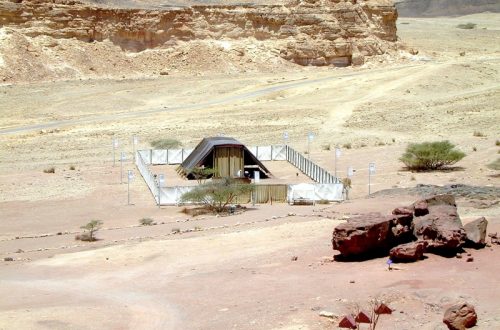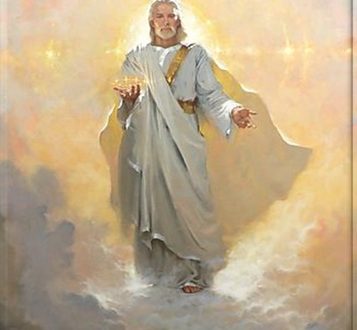Daniel, an elder statesman
Title: Daniel, an elder statesman
Aim: To recognize that God is building a kingdom that is everlasting.
Scripture: Daniel 7:9–14
Daniel, the man, Daniel 1–6
The book of Daniel contains historical accounts known and loved by generations of believers and unbelievers alike. What child who has spent any time in Sunday school cannot tell the episode of Daniel in the lion’s den?
Or who does not know at least the basic elements of the deliverance of Daniel’s friends, Shadrach, Meshach, and Abednego from Nebuchadnezzar’s fiery furnace? Miraculous events such as these have given Daniel a welcomed place in many people’s hearts.
As a member of the Israelite nobility in Judah and Jerusalem, Daniel was among those taken captive to Babylon (1:6). Early on, he was given the name of Belteshazzarand trained for the king’s service (v. 7).
Daniel was also given a position of prominence in the successive governments of Nebuchadnezzar, Belshazzar, and Darius. Though Daniel was highly favored and honored by various kings, his ministry at the highest levels of government was characterized by humility and a complete lack of interest in personal power or prestige.
Daniel’s long diplomatic career (605–530 B.C.) was also marked by his interpretation of visions and by his own spectacular glimpse into Israel’s future messianic kingdom. Furthermore, it was on his knees that Daniel dealt with kings and prophesied the rise and fall of world empires. Daniel’s life is a model of what persistent prayer and unwavering faith can accomplish.
In the first chapter of Daniel’s treatise, we learn that as new arrivals in Babylon, Daniel and his Judean colleagues passed the test of diet and learning. After refusing the king’s food for 10 days, they appeared healthier than the pagan young men who had eaten the royal food (vv. 8-16).
Verse 17 states that God bestowed extraordinary insight and discernment on Daniel and his three exiled peers. Daniel, it seems, displayed even more aptitude and ability than his immediate colleagues.
Later on, Daniel’s three Judean associates were cast into a fiery furnace for refusing to worship Nebuchadnezzar’s golden image. Yet, God miraculously preserved them (chap. 3).
Many years after that, jealous officials charged Daniel himself with praying to the one, true, and living God, despite King Darius’s decree against doing so. For this infraction, Daniel was thrown into a den of lions. Yet, even then, God protected Daniel from any harm (chap. 6).
Daniel’s vision of the ancient of days, Daniel 7:9–12
The preceding historical accounts are what most of us remember about Daniel. In one sense, they are incidental to his prophecies, though they do spotlight the faith and character of the Hebrew captives.
We discover that God has been, and is, in the business of using human institutions (for example, empires, nations, cities, and institutions) to accomplish His will. Chapter 7 of the book is a case in point. It concerns Daniel’s dream involving four beasts.
The “first year of Belshazzar” (v. 1) would be about 553 B.C. when Daniel saw in his vision a “lion” (v. 4), a “bear” (v. 5), a “leopard” (v. 6), and a hideous, exceedingly strong creature (v. 7). These outlandish, composite beasts were graphic depictions of four successive empires, namely, Babylonia, Medo-Persia, Greece, and Rome (7:17; 11:30).
It was the fourth beast that captured Daniel’s attention the most (v. 19). He was riveted by the huge iron teeth this brute used to trample and consume its prey (v. 23).
We learn from ancient history that the legions of Rome used their superior military might to overrun and assimilate other nations, including the remnants of the once powerful but later divided kingdom of Greece. The “ten horns” (v. 20) Daniel saw in his dream represent the vast sweep of the beast’s authority, which was manifested either in ten monarchs or kingdoms arising from the Roman empire (v. 24).
It is debated whether these entities existed at the same time as Rome or came after its demise. For instance, one common view is that the horns symbolize a second phase of the fourth kingdom, namely, a revived Roman empire that will materialize in the last days. This view notwithstanding, there is no direct evidence in the biblical text to support such a distinction.
A parallel passage is 2:41–42, which is part of the interpretation Daniel gave to Nebuchadnezzar’s dream in which he saw an “enormous, dazzling statue” (v. 31). The head of the figure was made from pure gold, its chest and arms were formed out of silver, and its belly and thighs were composed of bronze (v. 32).
These sections of the breathtaking statue corresponded (respectively) to Babylonia, Medo-Persia, and Greece. In turn, the figure’s legs made from iron and feet comprised of an iron-clay mixture symbolized Rome (v. 33).
Daniel explained that the feet and toes Nebuchadnezzar saw represented the divided nature of the kingdom (v. 41). Some parts of the realm would be as strong as iron, while other parts would be as brittle as baked clay (v. 42).
This mixture of iron and clay also showed that the preceding kingdoms would try to strengthen themselves (for example, by forming alliances with each other through intermarriage). Despite such efforts, though, they would fail, just as iron and clay do not mix (v. 43).
As with the ten horns on the hideous beast mentioned in 7:7 and 20, some interpreters view the mixture of iron and clay in the feet of the statue as representing a second phase of the fourth kingdom that is different from the legs of solid iron (for instance, a later federation of states occupying the region previously controlled by the Roman Empire). Another possibility is that the iron represents the culture and laws of imperial Rome, while the clay represents the divergent political and social traditions of its many parts.
In either case, it’s clear that the elements of the fourth kingdom cannot preserve their union. So, while this entity has a measure of strength, it is temporary and to be replaced by the eternal kingdom of God.
In 7:8, Daniel noted that while he was contemplating the ten horns, a smaller horn suddenly appeared. In turn, three of the earlier horns were plucked up by their roots to make room for the formidable newcomer (vv. 20, 24).
One view is that the above entity symbolizes the rise of the Antichrist (v. 21). This individual not only deceives the earth, but also seeks to control it through the military, economic, and religious systems of the world (2 Thess. 2:1-10; 1 John 2:18, 22; 4:1-4; 2 John 7; Rev. 19:19).
Another view is that the smaller horn represents an evil world system that embodies the Antichrist’s wicked characteristics. Ancient Rome would be one example of a human government that endorsed the persecution of believers, the spread of immorality, and the proliferation of heretical ideas.
Regardless of which option is preferred, the despicable nature of the smaller horn is unmistakable. Daniel 7:8 says this entity had human-like eyes that could never be satiated and a mouth that spouted arrogant claims. Verses 21 and 25 reveal that the imposing horn was allowed to wage war for a set time period against God’s holy people, as well as oppress and defeat them.
Verses 9 and 10 record Daniel’s vision of a heavenly throne room scene, the immediate backdrop of which is God’s plan for judging the wicked and vindicating the upright (vv. 22, 26). As noted earlier, the broader literary context of these verses is the elder statesman’s dream concerning the four world empires of Babylon, Medo-Persia, Greece, and Rome.
Verses 9 and 10 are characterized by symmetry and balance, which is consistent with the beauty and order that distinguishes the supreme Judge of the cosmos. This situation contrasts sharply with the churning of the sea and its beasts, which represents the agitation found in the tyrannical waters of human rebellion (vv. 2-8; see Isa 27:1; Jer 5:22; Nah 1:4; Hab 3:15; Rev 13:1).
Despite the pompous claims and defiant actions of the anti-God forces in the world, none of them can withstand the judgment of the Lord (Dan 7:27). From this truth redeemed humanity learns that the God of glory completely muzzles all would-be antagonists.
In his vision, Daniel saw thrones being set up, followed by the “Ancient of Days” (or the Ancient One; v. 9) taking His place to administer justice. In this verse, God is portrayed in human form as a revered, prudent, and authoritative Judge.
Paul referred to the Creator as the “King of kings and Lord of lords” (1 Tim. 6:15). He is the one who alone possesses immortality, who dwells in “unapproachable light” (v. 16), and upon whom no human can look directly.
Daniel noticed that the attire of the eternal God was white as snow, and His hair was white like pure lamb’s wool. The chariot-like throne on which the Ancient One sat was ablaze and mounted on fiery wheels (Pss. 50:3; 68:4; 97:3; 104:3-4; Isa. 6:1-4; 19:1; 66:15; Ezek. 1:27; Nah. 1:3).
A “river of fire” (Dan 7:10) streamed out from the all-glorious throne. It was as if flames emanated like solar flares from all around Him. The heavenly host who attended to the Creator-Monarch and served Him were countless in number.
The above was the awe-inspiring backdrop for convening the divine tribunal (Pss. 82:1; 94:2; 96:13). In the presence of the cosmic court of justice, scrolls were “opened” (Dan. 7:10), upon which human deeds were recorded.
As Daniel’s dream continued to unfold, he was captivated by the arrogant remarks mouthed by the small horn (vs. 11). This entity resembles the beast emerging from the turbulent sea recorded in Revelation 13:1. That grotesque creature had ten horns and seven heads.
On each horn of the brute the apostle saw there was a crown, and on each head there was a pretentious name that was an insult to God. In ancient times, people used horns to symbolize the military, economic, and religious power of their kings. People also used crowns to represent the exalted status of their rulers. The ten horns and crowns of the beast suggest that it is characterized by unequaled power and preeminence.
Thousands of years ago, people living in the Fertile Crescent used the head as a symbol of control and intelligence. John may have been indicating that the seven-headed beast was exceptionally cunning and influential.
Rulers in Egyptian, Mesopotamian, and Greco-Roman cultures often assumed titles of deity. Likewise, the beast from the sea took upon itself designations that God has reserved exclusively for Himself.
Although the beast John saw looked like a leopard, it had the feet of a bear and the mouth of a lion. People in those days associated agility with the leopard, bone-crushing strength with the bear, and swiftness and stealthy force with the lion. Evidently, the beast had all these characteristics, making it extremely deadly (v. 2).
Returning to Daniel’s vision, he saw that the small-horned beast was eventually condemned and executed for the atrocities it committed. Next, its corpse was cremated in an intense fire (Dan. 7:11).
The elder statesman noted that the Lord had already removed the authority belonging to the rest of the beasts Daniel described earlier. Nevertheless, God permitted them to go on living for a “period of time” (v. 12).
It’s unclear why the Lord allowed the preceding kingdoms to continue for an indefinite span, along with their inhabitants and customs. What is certain is that God would one day judge all evil. Likewise, no matter how dark things may appear, believers had the assurance that the Lord would watch over them and bring them through their trials.
Daniel’s vision of the Son of Man, Daniel 7:13–14
Daniel 7:13 spotlights the coronation of the “son of man.” The underlying Aramaic phrase is bar enash, which can also be rendered “human being.”
This person was a representative of the people of God. In contrast to the grotesque and arrogant small horn, the individual Daniel saw was characterized by divine power, integrity, and holiness.
To the elder statesman it appeared as if the “son of man” was being carried along by the clouds of the sky, just as a triumphant monarch might ride in his chariot to vanquish his foes. A procession of angels escorted the divine Warrior into the presence of the Ancient One.
The New Testament identifies the “son of man” in Daniel’s vision as Jesus of Nazareth. During the His trial before the Sanhedrin, the high priest demanded to know whether Jesus claimed to be the “Messiah, the Son of the Blessed One?” (Mark 14:61). In response, Jesus affirmed His identity (v. 62).
Moreover, Jesus declared that a future day was coming in which everyone would see the Savior seated in the place of power at the Father’s right hand. The onlookers would also see the “Son of Man” (v. 64) arriving on the “clouds of heaven” (Ps. 110:1; Matt. 26:64; Luke 22:69).
In Revelation 1:7, John made a similar statement about the second coming of the Messiah. The apostle echoed two prophetic passages from the Old Testament, one of which is Daniel 7:13.
The other verse is Zechariah 12:10, which reads, “They will look on me, the one they have pierced, and they will mourn for him.” At Jesus’ second coming, none will doubt that He is Lord. People will mourn either because of the judgment that is about to fall on them or because of the sins they have committed (Matt. 24:30; 25:31-33).
In Revelation 1:8, the Lord Jesus declared that He is the “Alpha and the Omega” (22:13).Alphaand omegaare the first and last letters of the Greek alphabet. In other words, the Messiah is the beginning and the ending of all things.
Furthermore, the Anointed One is sovereign over all that takes place in human history. In fact, His lordship encompasses the past, the present, and the future.
Throughout history, believers have endured abuse from enemies of the faith. Jesus’ promise that He is “coming soon” (22:12) has been a source of comfort for His followers down through the centuries.
Daniel 7:14 says that ruling “authority” was bestowed upon the glorious, heavenly, messianic figure, along with honor and royal sovereignty, so that all people of every race, nation, and language would worship and serve Him. Unlike earthly rulers and empires, the “dominion” of the Messiah is eternal, His authority would endure forever, and His “kingdom” would never be “destroyed.”
For thought and application
The rulers of Daniel’s day may not have gotten the point (but we should) that all earthly kingdoms are fragile and temporary compared to the eternal kingdom of God. The vision that Daniel saw should encourage us to put our foremost allegiance in the kingdom of God and not in any worldly ruler or earthly realm.
There are many unanswered questions about what God has planned for the future. Also, at times, we might want to know more than what the Creator has revealed in His Word about His eternal kingdom and the reign of His Son. The Father doesn’t often disclose hidden knowledge to His people, but He certainly can when He wants to.
The preceding truth is evident in the heavenly scene Daniel saw in which the “Ancient of Days” (Dan. 7:9) took His seat on His royal throne. From there, He reigns supreme over the entire universe.
Romans 13:1 reminds us that earth’s “governing authorities” are “established by God.” When we look at any world leader—and even a lower authority, like our boss—we should remember that they have their authority from the Lord.
Some nations last a long time, but history is filled with the accounts of once-invincible nations succumbing to the power of other world powers. While we can rejoice when God grants peace to our nation, we must put our trust in Him alone and not in any human entity.
From a heavenly perspective, the realm where God reigns is superior beyond comparison to the earthly kingdoms that come and go. Are you a citizen of that greatest kingdom? If not, then for you everything depends on your becoming such a citizen through faith in the King, Jesus the Messiah.
Daniel’s vision is just one part of the prophetic message of the Bible. We can believe every part of that oracle because it comes from the all-knowing God.




